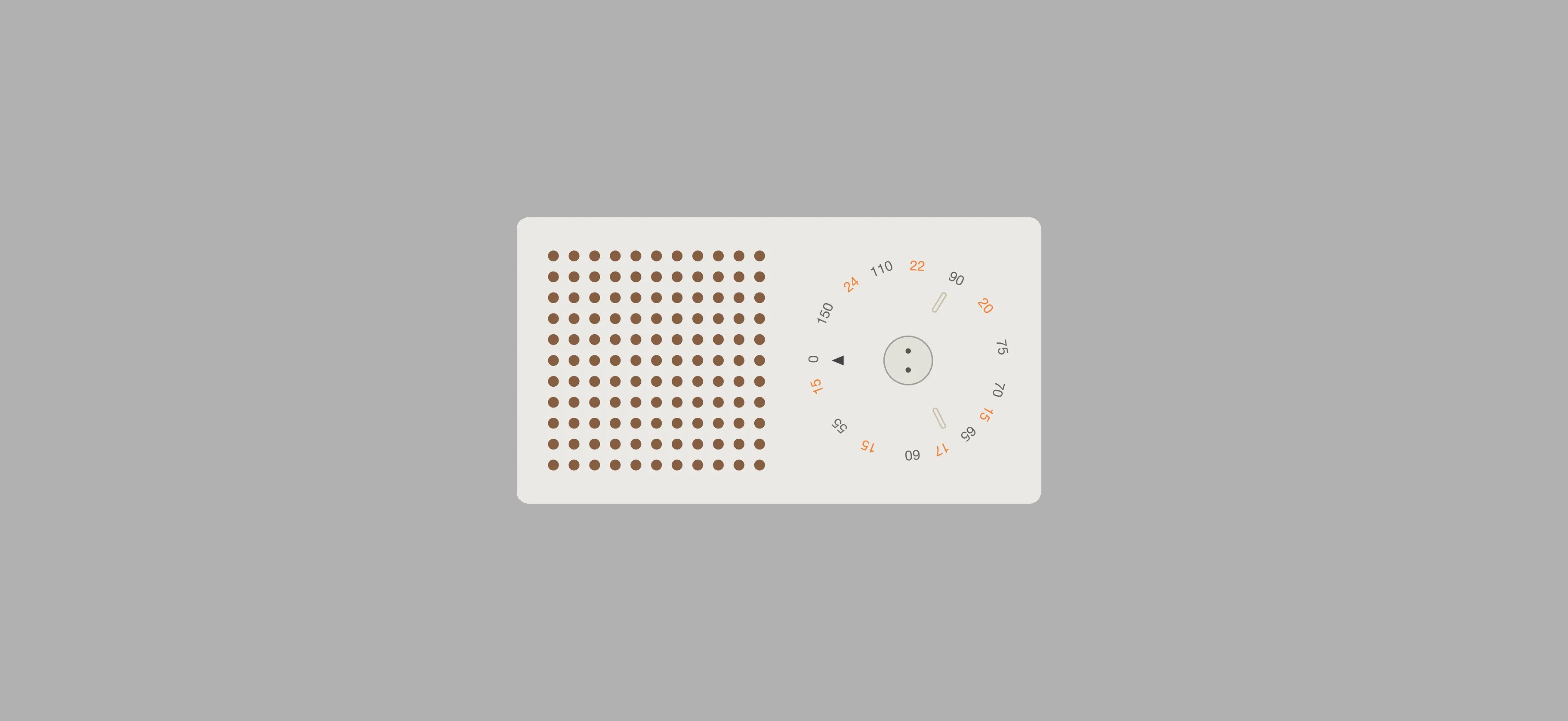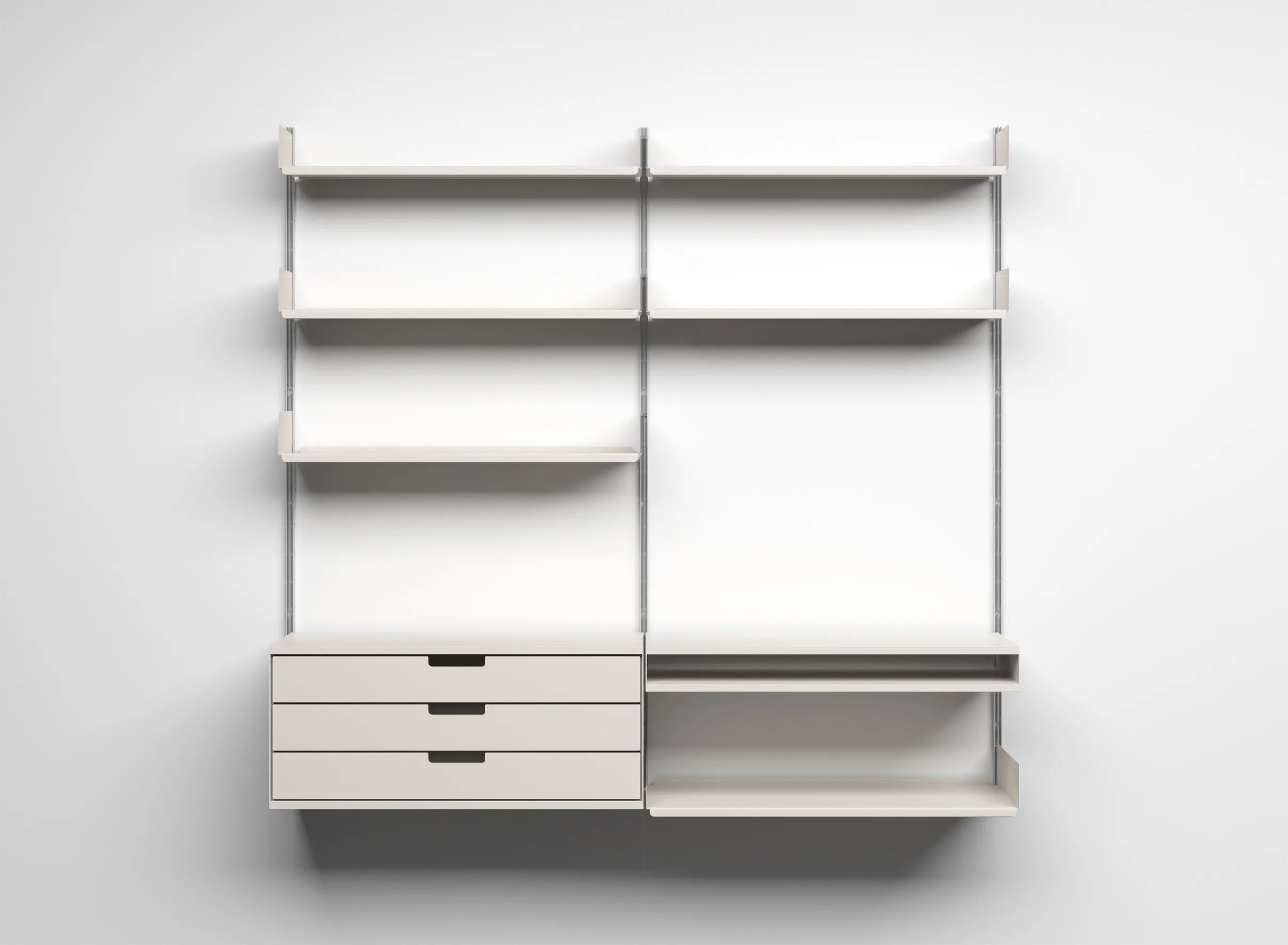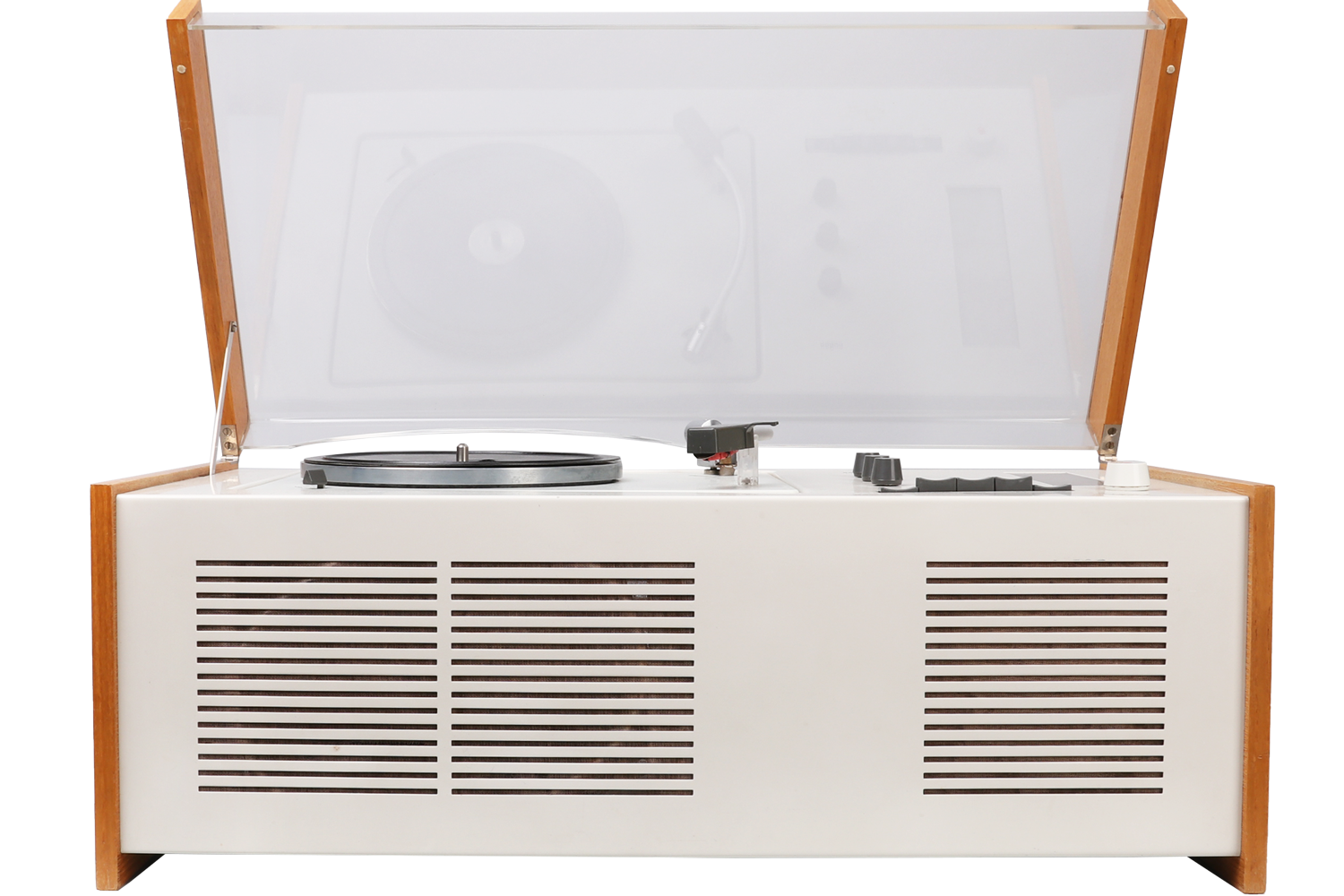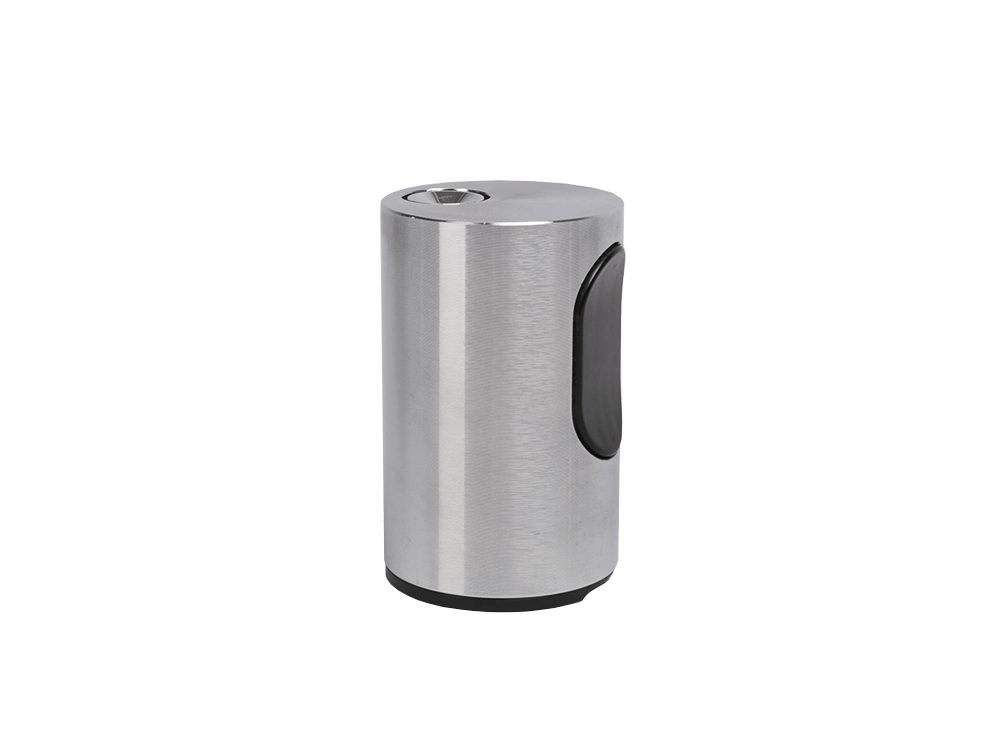Dieter Rams 10 Principles of Good Design
Quick Summary
Discover Dieter Rams' profound impact on design with his '10 Principles of Good Design.' Renowned for revolutionizing product aesthetics and utility, Rams' approach at Braun and Vitsoe has profoundly influenced modern design, from Apple's iPhone to sustainable, user-centric products. Explore how Rams' ethos blends functionality with environmental responsibility.
When was the last time you picked up a product or opened a software program and admired its simple utility and design? Chances are that design was heavily influenced by industrial designer Dieter Rams and his “10 Principles for Good Design.”
Who was Dieter Rams?
In 1995, Dieter Rams published Less but Better. The manifesto of sorts lays out Rams’ 10 principles of good design as well as his overarching design philosophy. The principles, along with his extensive body of work throughout the 20th century, have had a massive, wide-ranging impact on the design of everything from software to home products today.
A renowned German industrial designer, Rams is best known for his tenure as Head of Design at Braun—where he led the design of numerous electrical products—and for his work as part of Vitsoe (formerly Vitsoe+Zapf), which manufactures furniture designed by Rams.
Rams’ impact is felt well beyond the confines of home and electrical products, though.
Throughout his career, Rams worked with, influenced, and inspired well-known designers across industries, from contemporaries Dietrich Lubs, Hans Gugelot, and Klaus Klemp to Apple’s former Chief Design Officer Jony Ives and even documentarian Gary Hustwit.
His work was recognized across the globe, including such honors as:
The English title of Royal Designer for Industry, by the Royal Society of Arts in London
The SIAD medal conferred by the Society of Industrial Artists and Designers in London
The World Design Medal from the Industrial Designer Society of America
What is Dieter Rams' design philosophy?
After graduating from the Wiesbaden School of Art (with a brief sabbatical to apprentice in carpentry), Rams began his work at Braun in the mid-20th century.
Capitalism and its characteristic consumerism took off in the post-war West and presented a stark contrast to the problematic post-war recovery he experienced in Germany. This juxtaposition—something he referred to as “an impenetrable confusion of forms, colors, and noises”—helped forge Rams’ approach to design and its role in our lives.
At a time when many designers focused on the aesthetic quality of a product as the end-all-be-all, Rams helped pioneer the Functionalist approach to product design—positing that the most important consideration for designers ought to be how consumers will ultimately use a product.
“You cannot understand good design if you do not understand people.”
Rams believed good design is aesthetic, of course, but it should also improve the consumer’s well-being. It should challenge today’s throwaway society by offering long-lasting utility and help usher in the future.
Ten principles for good design
It should come as no surprise that Rams’ principles of good design—honed over several decades of radical change in the consumer product market—are timeless. They apply as fittingly to modern software as they did to a 1960s record player.
Good design is innovative
When we talk about “innovation” today, we often think of cutting-edge technology—but brand-new products aren’t the only way to innovate. Design can also be innovative, and according to Dieter Rams, good design must be.
The Braun T 1000 World Receiver is an excellent example of some of Dieter Rams’ most innovative design work. The first-of-its-kind radio could scan all broadcast frequencies, allowing users to access radio broadcasts from well beyond their local stations.
![]() Source: Only Once Shop
Source: Only Once Shop
Even for maturing product categories (like smartphones and many home products), designers can always break new ground. Rams’ philosophy holds that no design is genuinely ever complete. Instead, designers should work iteratively, continuously innovating to find new, better, more aesthetic, more user-friendly, and more sustainable ways to build products.
We see this ethos reflected today across industries. Consider the iPhone: the basic design of its hardware has been consistent for years, but Apple’s design team continues to work toward…
Designing a more sustainable iPhone by working with new materials
Making minor tweaks to improve usability (like designing a bigger screen)
Adapting the design to support newer features and changing consumer preferences and use cases (like offering different color options)
Good design makes a product useful
Looking at Rams’ catalog of product designs, they all have one thing in common: they exist to serve a purpose. From the electrical products he designed for Braun to the home products of Vitsoe, Rams’ work is useful, above all.
“The usage is the starting point of any design.”
The needs and goals for which consumers buy a product drive Rams’ designs.
This principle is about more than designing useful products, though. Good design must also avoid getting in the way of a product’s usefulness. A well-designed product has to strike a balance between aesthetics and function. A beautiful product is worthless if it makes the user’s life harder by, for example, over-indexing on minimalism to the detriment of usability.
Good design is aesthetic
For Rams, good design is about balancing aesthetics and usefulness. While a heavy proponent of Functionalism and the idea that good design is about usability, he also believes in beautiful products.
Consumer products, according to Rams, can be helpful in myriad ways. Adding beauty to our lives is one way to be useful, as is allowing for the user's self-expression.
Rams’ follows the human-centered design aesthetic; he is driven by the human experience—and beauty and aesthetics are an integral part of that experience. The aesthetics of the items we surround ourselves with inherently impact our sense of well-being. So, even the most basic consumer products should be both aesthetic and functional.
Good design makes a product understandable
A well-designed product is easy to use, according to Rams, because the design makes it easy to understand. Good design eliminates the need for a complex user manual, instead opting to let the product itself do the talking—to be self-explanatory.
The Braun T3 Pocket Radio, designed by Rams together with Ulm School of Design (founded by fellow German designer Otl Aicher), is a perfect example of this.
 Source: Medium
Source: Medium
The design is ostensibly minimal, clean, and aesthetic. But beyond that, it’s self-explanatory. The dial with radio frequencies on one side invites users to turn it and tune the radio. The small holes opposite the dial draw on a familiar design that lets the user know they cover the speaker.
The ridged volume wheel on the left-hand side of the device invites users to scroll—upon doing so. Users quickly learn that rolling the volume all the way down also powers off the product. A single output port shows users where to connect to the Braun TP1 phonograph.
Any user can pick up the T3 Pocket Radio and fully understand how to use it within minutes without ever reading a manual or watching a demo.
Good design is unobtrusive
In the words of Vitsoe, “Products fulfilling a purpose are like tools. They are neither decorative objects nor works of art. Their design should, therefore, be both neutral and restrained to leave room for the user’s self-expression.”
In other words, well-designed products don’t get in the way—of utility, aesthetics, or anything else. The Vitsoe 606 universal shelving system designed by Rams for Vitsoe is a perfect example.

Source: Medium
The storage system was designed to be modular, flexible, and—crucially—to blend into the background.
Users can assemble the shelving system in different ways depending on their needs. They can add or remove additional storage space as those needs change over time. The unobtrusive design of the system allows the items stored to shine while the shelving itself blends seamlessly into the background.
This inconspicuousness lends the 606 a timeless quality, too. Looking at the system, you could easily mistake it for a modern IKEA product.
Good design is honest
Ram’s career spanned the global expansion of consumerism and the golden age of advertising, from the days of cigar-chomping Mad Men to Instagram ads. Safe to say, he’s seen his fair share of products making lofty, dubious claims and failing to live up to them.
The key to good design’s honesty isn’t about under-promising and over-delivering—it’s about promising and then delivering on that promise. Rams isn’t against making bold claims, so long as your designs live up to those claims for consumers.
And here’s the crux: design that follows the rest of Rams’ philosophy can be honest. Innovative design doesn’t have to hype up its inventiveness. The useful, aesthetic design doesn’t have to sell its utility or beauty.
Good design is long-lasting
While this principle may seem simple enough, a lot goes into designing long-lasting products, particularly in the consumer and electrical products space, where both technology and consumer preferences change all the time.
Long-lasting design stays away from trends and fads. It uses high-quality, sustainable materials. It transcends its medium.
The ET55 calculator Rams designed while at Braun is an excellent example of this: while calculator materials may change, the simple, unobtrusive, and user-friendly design of the ET55 has stood the test of time.

Source: Medium
The round buttons encourage users to press them. The color coding and overall design simplicity make the calculator effortless to use.
That design is timeless. That’s why it probably looks familiar to most iPhone users: it was a big inspiration when the iPhone first launched and remains unchanged mainly on today’s iPhones.
Good design is thorough down to the last detail
Despite all the emphasis on simplicity and unobtrusiveness, Rams emphasizes that good design is nonetheless thorough for its minimalism. As Vitsoe puts it, “Care and accuracy in the design process show respect towards the user.”
A product cannot be truly useful, understandable, and long-lasting if its designers haven’t thoroughly designed every aspect of it to be so. That’s where the “but better” part of Rams’ noted “less, but better” ideal comes into play.
Take the Braun SK radiogram, for example.

Source: Only Once Shop
Rams didn’t design products to sit on a shelf in a design museum—he designed products to be used in busy homes. That’s why, in 1956, Rams lobbied to add the clear lid (pictured above), which consumers can close to protect the product when not in use.
The radiogram design was already great, but Rams’ thorough approach to the design process made it even better.
Good design is environmentally-friendly
While this principle certainly isn’t groundbreaking today, Rams was far ahead of his time when it came to designing sustainable, environmentally friendly products. Upon seeing the explosion of capitalism and global consumerism, Rams was immediately concerned about its impact on the earth, both ecologically and ethically. He asserts that designers belong at the forefront when it comes to solving for sustainability—they’re ideally situated to combat waste and excess.
“Design makes an important contribution to the preservation of the environment. It conserves resources and minimizes physical and visual pollution throughout the lifecycle of the product.”
Good design is as little design as possible
In Rams’ view, good design resists the temptation to over-engineer or allow the designer’s vanity in through the door. Good design is as simple as it can be while still providing utility, ease of use, and understandability.
The Braun Cylindric T2 cigarette lighter is a perfect example.
 Source: Only Once Shop
Source: Only Once Shop
It’s a product that only needs to do one thing—light your cigarette—and its design reflects that. Any other design elements would distract from its core function, so there aren’t any other elements.
The product, as Rams put it, goes “back to simplicity. Back to purity.” It’s a cigarette lighter, and it’s designed to be nothing more and nothing less.
Less, but better today
Dieter Rams’ principles have only grown in importance in the years since he first outlined them. Today, his design philosophy informs everything from software and user experience design to home goods, appliances, and everything in between.
No matter what you design, the best version of it runs right through the principles above, along with Rams’ entire body of work.
FAQs
What was Dieter Rams famous for?
A German industrial designer, Dieter Rams is best known for his work at Braun, where he led the design department from 1961 – 1995, and Vitsoe, a furniture company he works with to this day.
His environmentally friendly and minimal approach to product design set Rams’ style apart from the prevailing products in the mid-20th century, and his 1995 book—Less but Better—codified that design philosophy.
What is Dieter Rams doing now?
Rams officially retired from Braun in 1997, but he continues to work on furniture designs in partnership with Vitsoe. In 2018, Rams and his work were the subject of a documentary (called Rams) released by Gary Hustwit.
Now 91, Rams continues to advocate for “responsible and sensible product design” via the Dieter and Ingeborg Rams Foundation, initially established in 1992.
What was the influence of Dieter Rams?
Rams’ work at Braun defined electrical and consumer product design throughout the latter half of the 20th century and helped usher in a focus on design as a harbinger against excess and waste.
Today, his ten principles of good design have come to define best practices across design sectors, including consumer products, websites and software, and home goods. One need not look beyond the iPhone to see the massive impact of the Rams’ design philosophy that continues to this day.




